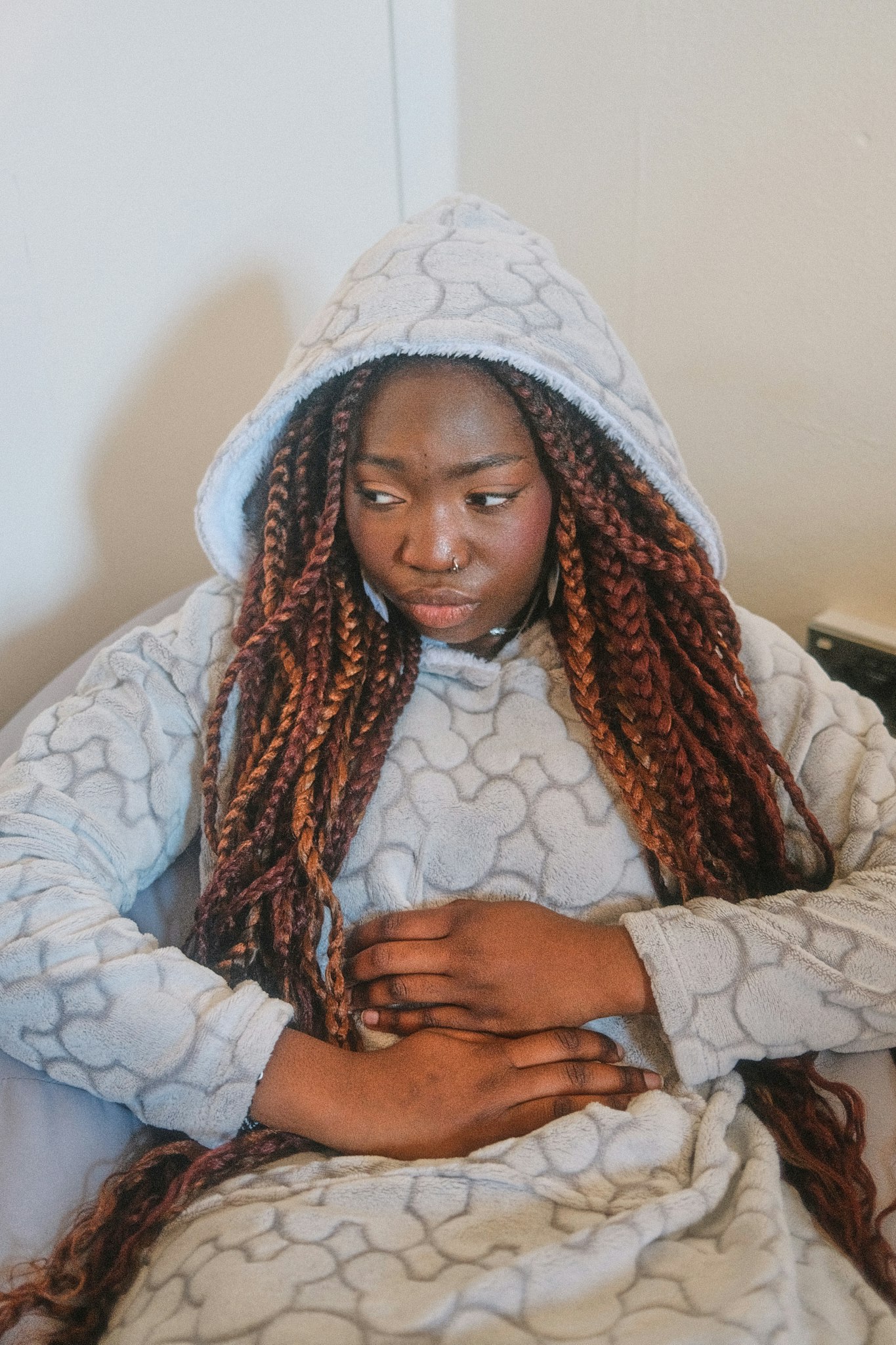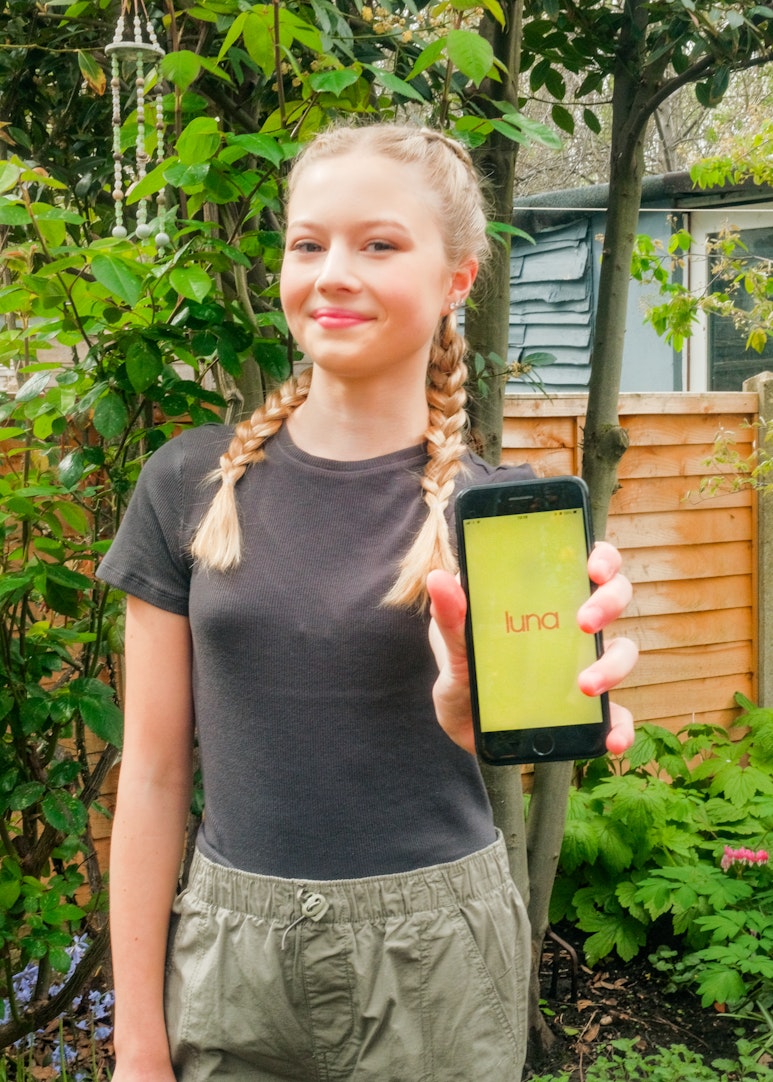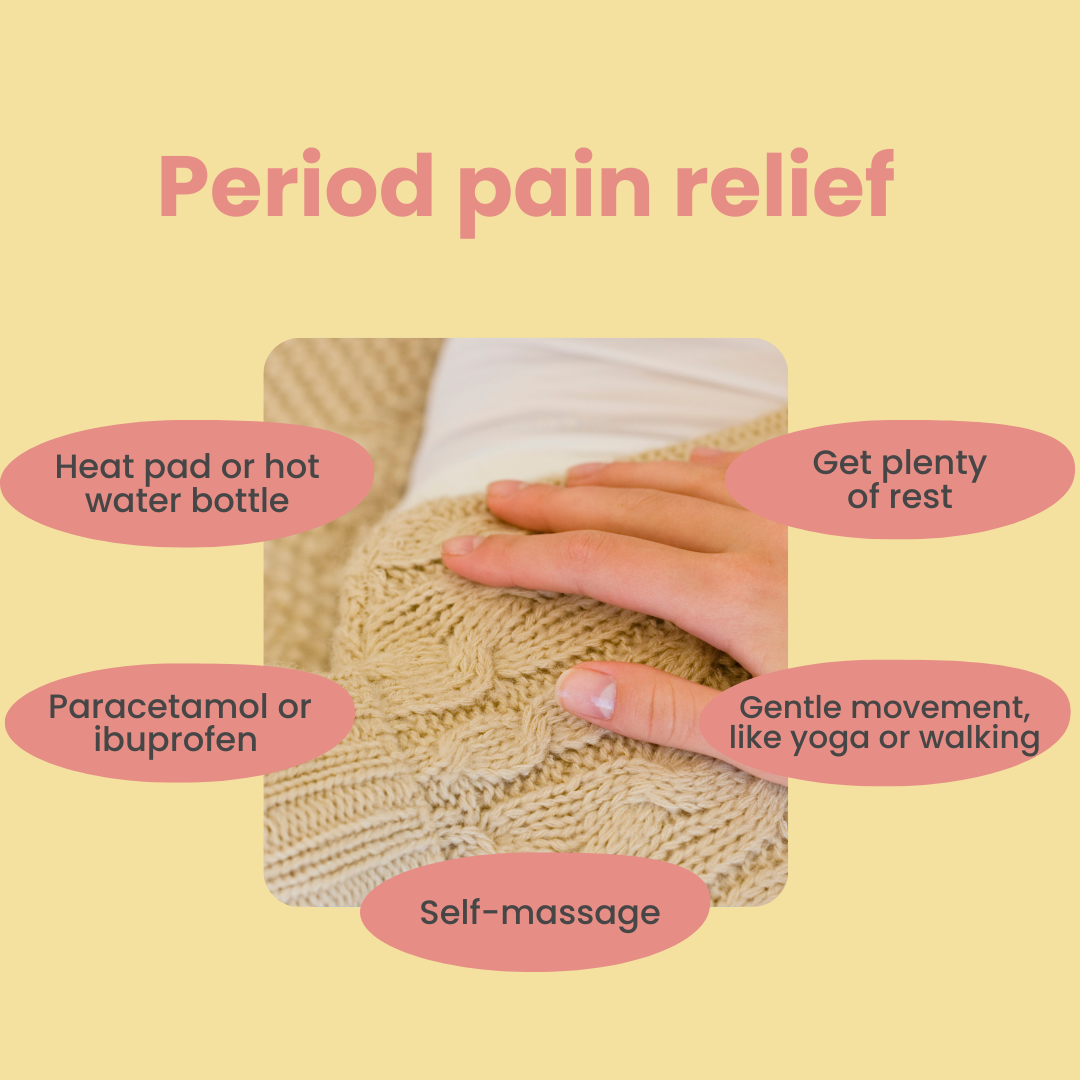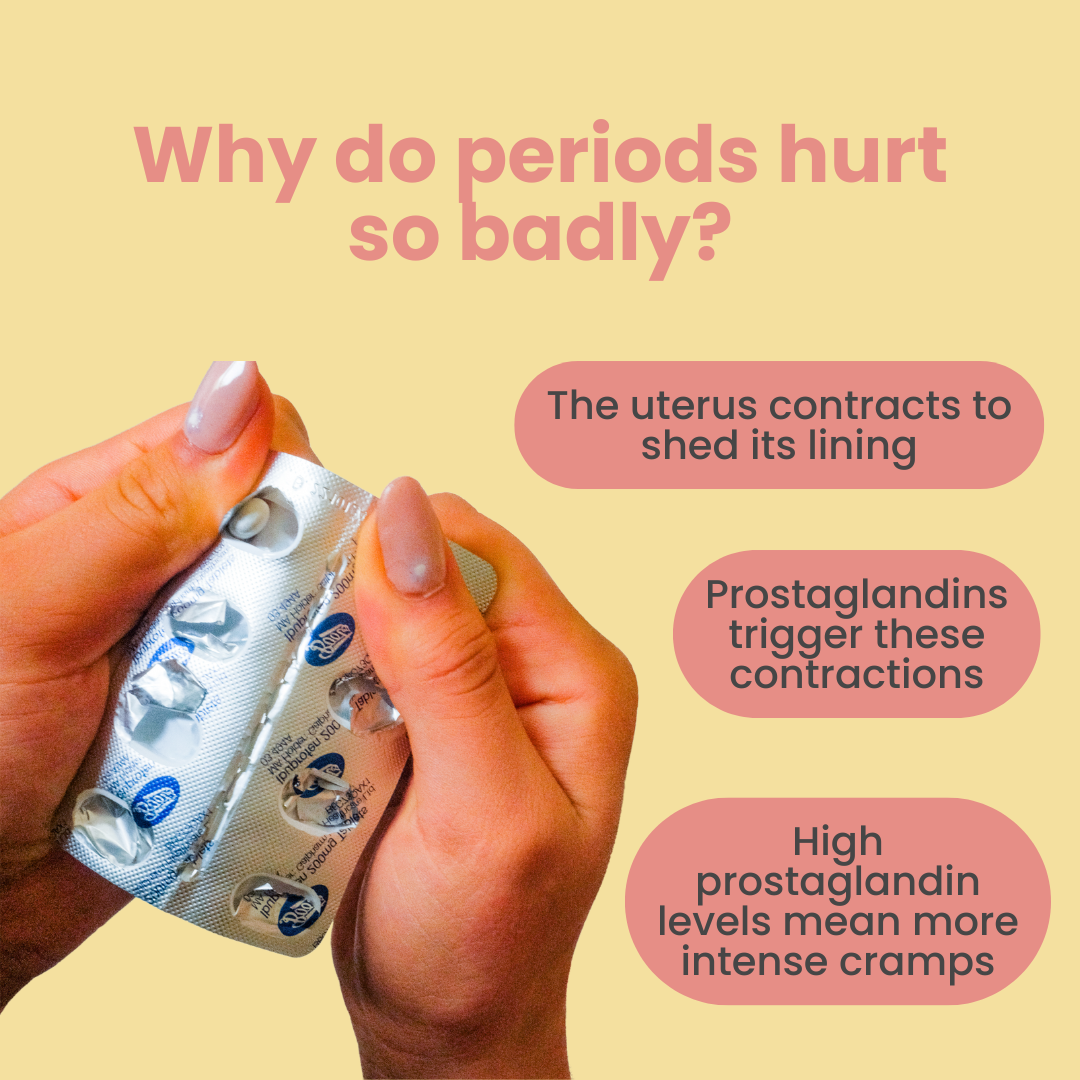
Tips for teenage period pain relief
Must dos for teenage menstrual cramps relief help

Quick summary
- Period cramps can range from mild discomfort to severe pain – providing the right support can make a big difference
- Effective period pain relief methods include using heating pads, gentle movement, getting enough sleep, and pain relief medication
- If period pain becomes severe or disrupts your teen’s life, seeking medical advice is important to rule out underlying conditions

If your teen struggles with period pain, you’re not alone in wanting to help – it can be a really tough time for some.
Menstrual cramps can range from mild discomfort to severe pain that interferes with daily activities.
Knowing how to provide period pain relief can make a big difference in your teen’s experience and overall wellbeing.
What do period cramps feel like?
Period cramps, or dysmenorrhoea, can range from a dull ache or sharp pain in the lower abdomen, back, or thighs.
Some teens describe it as:
- A heavy feeling in the pelvic area
- Sharp or stabbing pains that come and go
- Lower back pain or pressure
- Aching in the thighs or hips
- A general feeling of discomfort or fatigue
Cramps usually begin a day or two before a period starts and may last a few minutes to a few days.
While cramps are common, excessive pain that disrupts your teen’s life isn't something they have to put up with. We’ll touch on when it’s a good idea to seek medical help later in the article.
But before that, let’s quickly go through some of the effective teenage period pain relief ideas that can help your teen.
Fast-acting tips for teenage period pain relief

You’ll find plenty of advice out there about period pain relief, and it’s totally understandable if you are confused!
Now, what truly matters is easing your teen’s discomfort.
And that’s why we’ve put together a list of the most effective and fast-acting teenage period pain relief tips.
Also, just so you have peace of mind, we reviewed every tip with the GPs we work with, so you can trust they’re safe and helpful for your teen.
1. Use heating pads for cramps
Applying a heating pad or hot water bottle to the abdomen can help the brain to focus on temperature rather than pain, helping your teen to relax – a warm bath can also help.
2. Encourage gentle movement
Light stretching, walking, or yoga can provide distraction and release endorphins, the body’s natural painkillers – if you need to get your teen into exercise, luna's got a great guide to help you with that.
3. Offer pain relief medication
Over-the-counter period pain medication, such as ibuprofen or paracetamol, can help alleviate discomfort (just make sure to check on the box that these are suitable for your teen).
Remember to always read the instructions for the dosage and how to take these.
4. Massage the abdomen
Massaging the lower abdomen with gentle pressure can improve circulation and alleviate pain.
Encourage your teen to try:
- Circular motions with the palm
- Applying pressure with fingertips for 60–90 seconds
- Using essential oils, like lavender, to enhance relaxation
Lifestyle advice for teenage menstrual cramps relief
Even though you already know the period pain relief tips that work the fastest, they're sometimes not enough.
Especially if you notice your daughter is suffering badly every time she has her period.
While different methods work for different people, the best cramp relief options often include a combination of lifestyle adjustments and medication if necessary.
Part of your teen's period journey will be figuring out what works best for them, so try to encourage them to reflect on this.
👉 Regular movement and exercise
While exercising might be the last thing your teen feels like doing while on their period, even gentle movement can provide relief. Studies have found that menstruators who exercise regularly are less likely to suffer menstrual pain.
Activities like:
- Yoga
- Stretching
- A short walk
- Light swimming
can all help release endorphins, which naturally reduce pain.
But if you are having a hard time convincing your teen to exercise, give luna’s guide on how to get your teen into exercise a read.
👉 Proper sleep and rest
Teens need 8-10 hours of sleep per night, but their body is working extra hard during their period.
That’s why you need to ensure your teen is well-rested and is getting the quality sleep that they need.
On top of that, having a proper sleep cycle will help your teen recover better and reduce any fatigue-related discomfort.
Make sure to check in with your teens to ensure whether or not they are facing any issues with low self-esteem or phone addiction that might be messing with their sleep.
👉 A healthy balanced diet
Healthy eating is super important for teens, especially those who are experiencing severe period pain.
Studies have shown that specific nutrients may help reduce certain PMS symptoms (though there aren't any specific, scientifically-proven foods that can help with cramps).
For example, you can encourage your teen to try foods that are enriched with magnesium and omega 3.
Why?
Because, magnesium helps to to relax muscles, including the uterus (womb) muscles, which may help with cramps.
Omega-3 can influence the type of prostaglandins your teen’s body produces, which may help reduce pain levels.
What foods?
Dark green leafy vegetables, almonds, and dark chocolate for magnesium. Including oily fish in your teen’s diet once or twice a week should provide enough omega-3.
👉 Staying hydrated
Hydration plays a bigger role than most people realise.
When your teen is dehydrated, their body retains water and sodium, leading to bloating and increased discomfort.
Drinking plenty of water, especially warm water, helps reduce this bloating.
It also eases muscle contractions and flushes out toxins.
Herbal teas like peppermint, ginger, or chamomile are extra soothing and can also calm nausea and inflammation.
Encourage your teen to sip fluids throughout the day, even if they don’t feel thirsty.
Why do periods hurt so badly?
The pain from period cramps is caused by the uterus contracting to shed its lining.
The hormone-like substances called prostaglandins trigger these contractions.
The higher the prostaglandin levels, the more intense the cramps.

In some cases, severe period pain may be linked to underlying conditions such as:
- Endometriosis
- Polycystic ovary syndrome (PCOS)
- Uterine fibroids
It's worth saying that if your teen’s pain is unbearable, lasts longer than usual, or causes them to miss school or activities, it’s important to consult a doctor.
When to see a doctor about period pain
While some discomfort is normal, severe period pain isn’t something your teen should just "put up with".
Seek medical advice if:
- Pain is severe enough to disrupt daily life e.g. stop them from attending school
- Pain relief methods aren’t effective – ibuprofen and paracetamol aren't working
- There are other symptoms like heavy bleeding, feeling sick, or dizziness
- Periods have suddenly become much more painful than before
A doctor can check whether an underlying condition is causing the pain and recommend the best treatment options.
How can you support your teen with their period pain?
Supporting your teen through their period isn’t just about cramp relief – it’s about helping them feel understood and cared for.
By encouraging healthy habits, having open conversations, and offering emotional support, you can help them manage their period.
Know that every teen experiences periods differently, and if you yourself are a menstruator they can also be different from what you experience(d).

Hopefully by trying the methods luna has outlined, you can help them find what works best for their body.
Just know that if period pain becomes unmanageable, you don’t need to hesitate to seek medical guidance – doctors are well-trained and happy to support, and treat people with these kinds of struggles all the time.
How we created this article:
luna's team of experts comprises GPs, Dermatologists, Safeguarding Leads and Junior Doctors as well as Medical Students with specialised interests in paediatric care, mental health and gynaecology. All articles are created by experts, and reviewed by a member of luna's senior review team.
Sources:
NHS "Period pain" | Accessed 14.05.25
https://www.nhs.uk/conditions/period-pain/Mayo Clinic "Myofascial release therapy" | Accessed 14.05.25
https://www.mayoclinic.org/diseases-conditions/back-pain/expert-answers/myofascial-release/faq-20058136The Women's "Exercise, diet and periods" | Accessed 14.05.25
https://www.thewomens.org.au/health-information/periods/healthy-periods/exercise-diet-periodsP S Sohal, V E Baracos, M T Clandinin "Dietary omega 3 fatty acid alters prostaglandin synthesis" | Accessed 14.05.25
https://pmc.ncbi.nlm.nih.gov/articles/PMC1132913/We'd love to keep in touch!
Sign up to our parent newsletter for emails on the latest teen trends, insights into our luna community and to keep up to date
By signing up, you are agreeing that we can use your email address to market to you. You can unsubscribe from marketing emails at any time by using the link in our emails. For more information, please review our privacy statement.